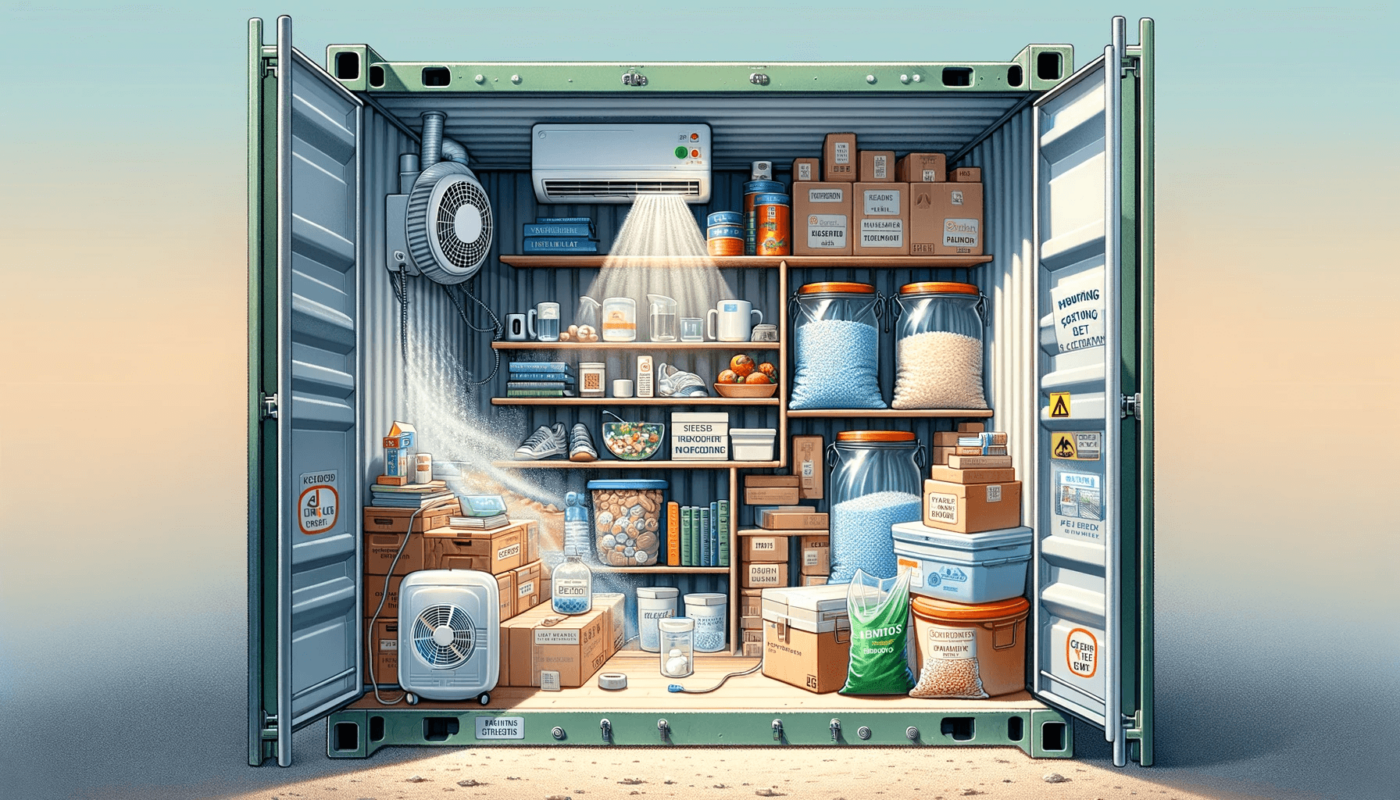Dampness is one of the worst things that furniture can be exposed to. Moist, humid environments can cause mould and mildew to take hold, seriously damaging your furniture and also creating a potential health hazard. If you need to store some furniture in one of our furniture storage options for a prolonged period of time, it is a good idea to take some precautions to prevent damp damage.
What is Mould, Mildew, and Damp?
Also known as “damp” mould and mildew are both fungi that thrive in dark moist environments. You may have seen this growing in your bathroom or kitchen at some point. While they all have similarities, there are some distinct differences between the three:
- Mould: Is typically fuzzy or slimy, and comes in colours like blue, green, yellow, and black. Black mould is the most dangerous to humans.
- Mildew: Mildew is usually powdery, and comes in light colours like white and grey. It typically smells musty.
- Damp: Damp is the name for mould and mildew that grows in the walls of buildings. It can be caused by condensation, or mould rising from the ground. It can usually be seen as patches on walls and has a musty smell.
Preventing Mould Damage
Putting your furniture in self-storage can keep it safe and dry while you are decorating or moving house. However, not all self-storage units are created equal. You should choose your self-storage units carefully, and pack the furniture properly so that it stays clean and dry.
How to Keep Moisture out of Storage Containers
The best storage facilities have wide doors and strong, secure walls between each locker. Walk around the storage locker to make sure that there are no signs of water damage, particularly in the corners. Check with the facility to find out what insurance or compensation policies they have. You may need to take out a separate insurance policy that covers any potential water damage to items you keep in storage.
Some considerations to take when storing items in a storage container:
- Keep Stored Items Off the Floor: If your storage unit has a concrete floor, then this is especially important. Concrete is porous, which can cause moisture to be drawn up from the ground. This is an effective method even if you’re using shipping containers as your storage unit as this will help the air flow more freely in the container, which can prevent mould growth and moisture build up on cardboard boxes. Cover the floor with wooden pallets, or place your belongings on shelves that allow airflow.
- Keep that Air Flowing: Create space for the air to flow in your storage unit. Cardboard and plastic boxes that are stacked too closely together can trap moisture – when moisture begins to form, mould and mildew have an optimal place to grow. You can prevent this by creating space for airflow within your storage unit. Make sure to leave space between the walls as well for this same reason.
- Keep Humidity Levels Down: Keep a hygrometer in your storage unit to keep track of the humidity levels – you never want these to exceed 50%. A high humidity level can cause moisture to build up in the container unit. You can prevent humidity, and moisture build-up by using a few different methods:
- A Dehumidifier: This will suck moisture and condensation out of the air.
- Use Cat Litter: Yes even cat litter! Cat litter is fantastic at absorbing moisture. Place an open bag in your storage unit, or pour it into a bucket to help prevent condensation.
- Silica Gel Packs: Place these around the container to absorb moisture and humidity.
- Check Your Unit Regularly: This is especially true for long-term storage. Make sure you check your storage unit regularly to make sure you catch any mould or mildew growth before it gets out of hand. You can easily arrange your belongings to provide the proper airflow, add another silica gel pack to each corner of the shipping container, and use other methods to prevent moisture from continuing to grow.
Packaging Belongings in Your Storage Units
- Plastic Sheets: Cover the floor of the storage area with thick plastic sheets that will keep moisture away from the concrete floor.
- Wooden Pallets: Lay wooden pallets on top of the plastic sheets to act as a buffer between the sheets (which will collect any moisture that does make it into the unit) and your furniture.
- Protect Furniture: If possible, disassemble wooden furniture (such as beds or tables) before storing it. Put any nuts and bolts in a bag and tape the bag to the frame. If the furniture is varnished, clean it with soapy water and then apply a fine coat of wax to it. Remove drawers from dressers and end tables. Use the drawers to store smaller items, and place a towel over each drawer to keep it dust free and to protect it from scuffs and damage.
- Protect Fabric: Fabric items such as chairs or mattresses should be carefully vacuum cleaned and wiped down or sprayed with an antibacterial agent before putting it into storage. Cover them with a plastic sheet to minimise exposure to both dust and damp.
- Choose Storage Materials Carefully: Use a high quality cardboard storage box and industrial bubble wrap to keep items safe while storing them in a shipping container or storage facility.
- Dry Everything: Even the smallest amount of moisture can be the catalyst needed for mould growth. Mould and mildew can spread quickly to other stored items in small spaces like shipping containers. When cleaning your items, make sure you give them plenty of time to dry before storing them.
- Use Moisture Absorbants: By absorbing moisture in the air, we can reduce the amount of moisture in the storage unit. We can do this by using moisture absorbing agents called desiccators. Examples of this include salt, rice, silica gel packets, and cat litter. These should ideally be placed everywhere in the storage unit, including inside boxes, cabinets, and sitting in the open.
- Don’t Use Plastic Covers: Packing your belongings in plastic covers will trap moisture, ensuring that your items begin to rot or mould. When in doubt, use cardboard or paper covers, which allow air to circulate.
Treating Mold and Damp Damage in Your Storage Unit
If something has been sitting in your loft or garage for a long time and has been damaged by mould, don’t just throw it out. In many cases, it is possible to salvage the item. Start by taking the furniture outdoors to clean it and remove mould first. Try not to clean mouldy items indoors because the mould spores can spread, causing even more damage or introducing health risks into the home. Work in a well ventilated area and wear a mask to avoid breathing in any spores.
Start by performing a small spot test (on the rear, or underside of the furniture) using your chosen cleaner or detergent. Wipe the furniture down with a clean cloth soaked in a mild detergent. If the furniture is varnished and the mould is superficial, then simply wiping the furniture clean then treating it with an alcohol solution or a slightly stronger detergent may get rid of all of the mould. If the furniture is not varnished, or the mould has taken a stronger hold, sand the furniture down with fine sandpaper, then cover it with a clear coat or some wax to keep moisture out and prevent the mould from growing back.
Browse our selection of Storage Containers here
We have storage solutions to suit all needs


